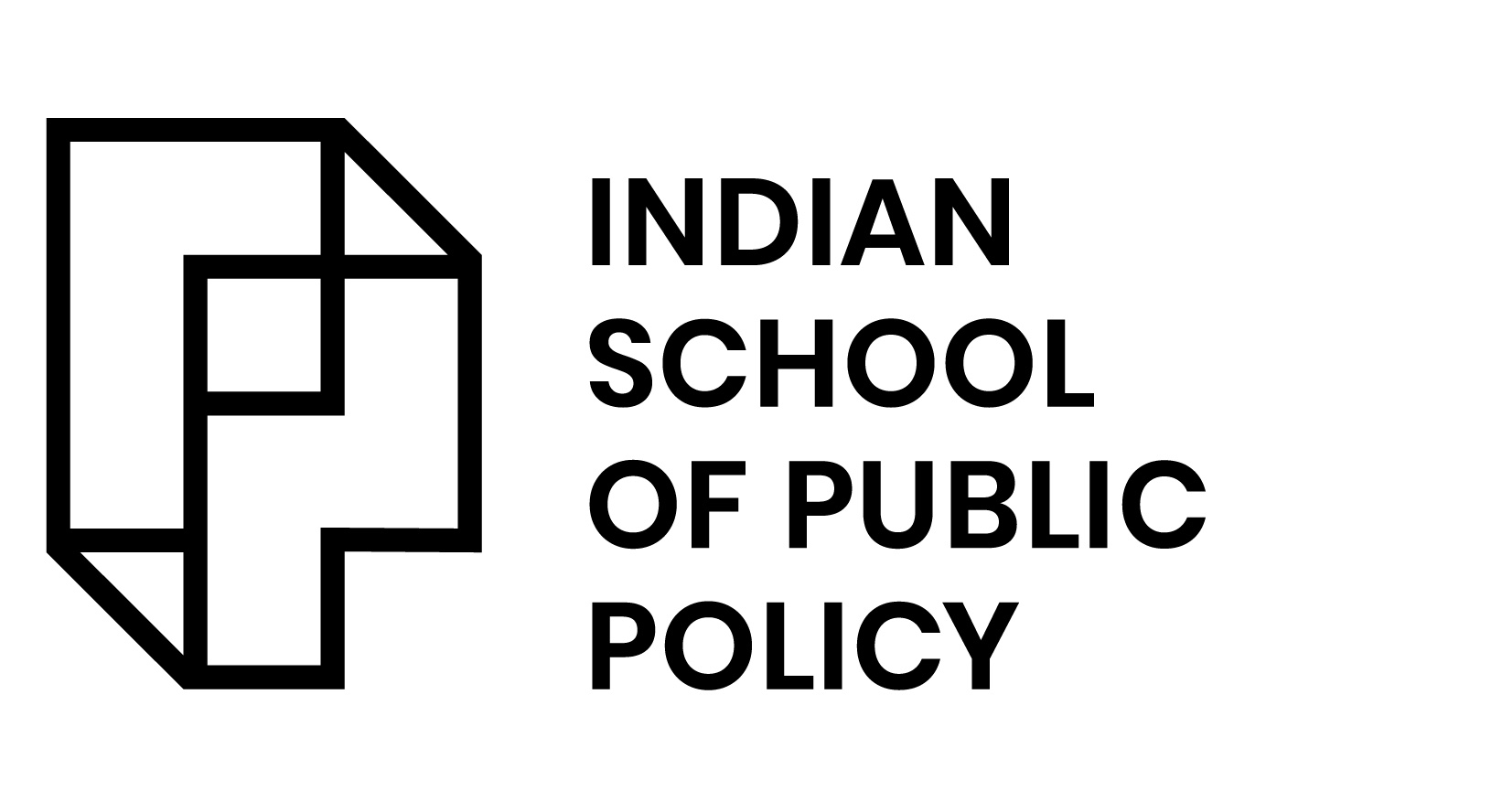
India and Covid-19: Economic Challenges, Impact and Policy

The Socratic Paradox has presented itself to the world once again. If there is one thing we know for certain about COVID-19 at this point in time, it is that we don’t know anything for certain. This uncertainty around the absolute knowledge is necessary to establish upfront since it ideally opens us up to the fact that this is an evolving situation.
In this paradigm, it becomes acceptable that an initial announcement of masks being unnecessary is discarded for the latest advisory that everyone should wear masks. It ideally also becomes suitable that a situation reassessment can mean that a 21-day lockdown is extended beyond twice and if need arises, may again be extended in some form or the other.
In February, when the virus was largely limited to its origin country, China responded with strict lockdowns – a move that was deemed draconian by the world at large. After all, a lockdown would not only severely capsize the Chinese economy, which it did: the consensus 2020 growth pre-COVID was at a range of 5-6% and has now been estimated at 1.2%, but it would also impose a massive cost on human rights. 1 The Human Rights Score which determines the degree to which the governments protect, and respect human rights wasn’t great to begin with for China. In 2017, China ranked at 170 out of the 195 countries in scope, that is at the 13th percentile.2 For reference, India placed at 172, the 12th percentile.
But, as the virus began to take over, governments across the world were quick to take cues from the widely read Imperial College paper that made a case for the pointed ability of non-pharmaceutical interventions, in the form of quarantine and isolation, to reduce the rate of infection, the rate of mortality and also, the demand on healthcare.3 Soon after, the lockdowns began.
The stringency of lockdowns though has varied considerably. The Oxford COVID-19 Government Response Tracker placed India, which effectively put 1.3 billion people under lockdown, at the top of the strictness indicator with a score of 100 for the first phase of the lockdown. The number has come down to 94 as of 6th May.
Can we extrapolate this to say that the lockdown will continue to ease? Not necessarily.
China’s peak strictness was recorded in the beginning of March at 76 and came down to 43 as on 16th April. It is back up to 62 as on 6th May 2020, after hints of a second wave of infections.4
Note that while the United States, Spain and Italy are at the top of the list of COVID-19 infections, their stringency index is at 70, 89 and 94 respectively.
Most of these countries are ahead in the epidemiological curve, so it is inaccurate to compare them to India. But statistically still, by no means is India the only one at the top of the list. We share the spot with countries like Israel, Bermuda, Egypt, Portugal, Vietnam amongst others.
Figure 1: Countries by Stringency as on 30th March 2020,
Source: Oxford COVID-19 Government Response Tracker
The challenges for us are labyrinthine, owing to multiple metrics, some of them being –
- High population density
The 2011 Census of India notes that the population density of India was at 382 per square kilometer. 5 World Bank’s data repository suggests the 2011 national value was at c.420 per square kilometer. At an approximate increase of 8%, 2018 data is recorded at c.455 per square kilometer, which is 18.4 times the low-income countries subgroup’s population density, 11.4 times the middle-income subgroup and 111.6 times the high-income subgroup.6
A higher population density implies social distancing becomes harder to follow through and the rate of infection, R0, can be higher and hence ceteris paribus, the rate of mortality might be higher too.
Often, all of India’s problems have a simpleminded underpinning of population as the root cause. However, if it were only population density, Singapore with 7952 people per square kilometer would be in trouble, and not a model of first phase lockdown. One of the explanatory differences? Singapore is a high-income country and India is a low-income country.
- Government’s squeezed spending capacity
The way most economies are set up, the power to prevent the disease from spreading further by effectively locking the country down, protect the people by offering accredited healthcare support, palliate the economy from the induced slowdown, respectively rests with the government. To do any of the three, our government needs quite a bit of money.
The Indian government runs a fiscal deficit. India’s current debt to GDP ratio is at 70%. A year of low GDP growth and a wider fiscal deficit will further deepen the debt. A higher debt to GDP ratio impairs the credit worthiness of a nation, that is India may have to struggle to finance her expenses.
Now again, this is not the only measure. United States has a debt to GDP ratio of 107%, Italy of 135% and Japan of 238%.7 But United States and Japan are both highly graded nations with their sovereign credit ratings in the top rung. While Italy is a lower medium grade like India, but unlike India, it sits within the Eurozone and has access to its corpus.8
A crisis situation also often means that there is a capital outflow from emerging markets which are seen at a higher risk because of above mentioned reasons. We’re already witnessing that. Foreign portfolio investors FPIs) and foreign institutional investors (FIIs) together pulled out Rs.619 bn from the equity segment and Rs.603 bn from the debt segment in March. The trend has continued in April.9
While India’s major source of financing deficit is not external commercial borrowing, it is an indicator of how much confidence the market retains and in turn influences the amount of market borrowing facility available to us.10
Having noted the above, we must remember these are unprecedented times and thus, this is certainly not a time for fiscal prudence. There are a variety of funding opportunities still available to us – government bonds, special purpose vehicles, aids etc.
- A skewed labour composition
The opportunity to run the economy from home is severely limited in India. The unorganized sector employs 83% of the total Indian work force. There are 92.4% informal workers (with no written contract, paid leave and other benefits) in the economy.11
3-crore manufacturing workers, 5 crore non-manufacturing workers and 6-crore service sector employees are estimated to not have a written contract. 12
If employers are affected in the economic downturn, which they surely are, it is hard to rely on their benevolence to continue paying these at-risk workers.
The CMIE survey notes the unemployment rate has shot up to 26.7% in rural India and 25.1% in urban India as of 19th April. A month ago, before the lockdown began, the survey recorded unemployment rate between 6-8%. 13
An extended lockdown automatically implies that most workers will struggle to meet their ends and dip into their savings if any. The household savings ratio has also been steadily on the decline since its global financial crisis peak.14
The prospects of getting a job afterwards will be driven by investments patterns. Looking at business confidence, the chances of a boost in the economy looks bleak.
Movement towards automation in all sectors is expected to speed up, putting low-skilled jobs at further risk.
- An Untested Health Infrastructure
According to the Global Health Security Index 201915, India ranked 57th among 100 countries on a scale to gauge preparedness for the outbreak of serious infectious diseases.
There are multiple issues that surround the spectrum of healthcare –
- Awareness around assessing one’s own health status –
Apart from there being alternate traditional and modern notions of health which accounts for misinformation, there is also low priority for health and hygiene related matters. - Access to healthcare –
- Physical reach is one of the basic determinants of access, defined as “the ability to enter a healthcare facility within 5 km from the place of residence or work”.
As per this definition, a 2012 study found that in rural areas, only 37% of people were able to access IP facilities within a 5 km distance.16 - Even if one manages to reach a primary health center, it is likely that they will lack basic infrastructural facilities such as beds, wards, toilets, drinking water facility, clean labor rooms for delivery, and regular electricity.
- Physical reach is one of the basic determinants of access, defined as “the ability to enter a healthcare facility within 5 km from the place of residence or work”.
- Human Power in Healthcare –
A 2011 study estimated that India has roughly 20 health workers per 10,000 population, with allopathic doctors comprising 31% of the workforce, nurses and midwives 30%, pharmacists 11%, AYUSH practitioners 9%, and others 9%.
- Affordable Healthcare –
- Almost 75% of healthcare expenditure comes from the pockets of households. Health expenditures are responsible for more than half of Indian households falling into poverty; the impact of this has been increasing, pushing around 39 million Indians into poverty each year. 17
- A public health care system is essential to tackle a disease like COVID-19. India currently spends less than 1% of GDP on healthcare. The comparative data from 2016 mentioned in the NHP shows among the 10 South East Asia Region countries, India, at 0.93% of the GDP, was above only Bangladesh at 0.42%.
- India’s neighbors, such as Sri Lanka (1.68%), Indonesia (1.40%), Nepal (1.17%) and Myanmar (1.02%) are spending far more than India on healthcare.18
While the Union Budget 2020-21 allocated 2.2% to healthcare, the need is significantly higher.19 The government is reaching out to different areas to finance this need now. The World Bank, for instance, has approved $1 bn for India COVID-19 Emergency Response and Health Systems Preparedness Project. 20
With the above considerations and more surrounding us, the decision of a complete lockdown only goes to show how beleaguering the health crisis is.
If the virus can be proactively contained, albeit through harsh measures of a lockdown, we have a chance to boost the economy back up. China’s current trajectory looks like it follows a V-shape: a quick sharp downfall and a quick recovery. It is starting to show up in the statistics.
China’s GDP fell by 6.8% year on year in 2020 Q1, which is the worst ever recorded. However, Industrial Production Operation saw a 32% increase in March over the previous lockdown month.21 Almost 96% of China’s large and medium-sized enterprises have resumed production, up 17.7 percentage points from February.22
This V-shape is an optimistic hopeful case. The more likely outcomes could be a prolonged slowdown, or a recovery that doesn’t quite bring us back on the same track.
IMF has cut India’s FY 2020-21 growth forecasts from January’s 5.8% to 1.9%. So have many other economists –
Source: IMF
The intensity and duration of the economic shock will entirely be defined by the virus. In such a case, policy responses, no matter how intricate, have a fair chance of falling short.
India’s policy response at this stage, by all means, is only the beginning.
The Central Government’s response –
- India COVID-19 Emergency Response and Health System Preparedness Package (15000 crores, 0.1% of GDP):
- Building health infrastructure, including testing facilities for COVID-19, personal protective equipment, isolation beds, ICU beds and ventilators.
- Pradhan Mantri Garib Kalyan Package (1.7 lakh crores, 0.8% of GDP):
- Offer in-kind (food; cooking gas) and cash transfers to lower-income households;
- Insurance coverage for workers in the healthcare sector;
- Wage support to low-wage workers (in some cases for those still working, and in other cases by easing the criteria for receiving benefits in the event of job loss).
Several measures to ease the tax compliance burden across a range of sectors have also been announced, including postponing some tax-filing and other compliance deadlines.23
The State Government’s response –
Many state governments have announced measures to support the health and wellbeing of lower-income households, primarily in the form of direct transfers i.e. free food rations and cash transfers.
RBI’s response –
The Reserve Bank of India (RBI) has the power to regulate monetary policy and in turn ensure that the money keeps flowing in the economy. The RBI has made it clear that it will not hesitate to use any instrument — conventional or unconventional — to mitigate the impact of COVID-19, revive growth, and preserve financial stability.
Some of the actions are listed below-24
- Boosters for MSMEs.
The micro, small, and medium enterprises MSMEs contribute to 29% of India’s GDP and have often been deemed as the “backbone” of the economy, primarily because it has managed to remain insulated from economic shocks. However, a lockdown is unlike any other and affects them significantly.
RBI has announced 50,000 crores for (MSMEs).
- Reduction of the repo and reverse repo rates.
Currently, Rs 6.9 trillion are being absorbed under RBI’s reverse repo operations wherein banks are parking their extra funds. There is a systemic liquidity surplus that has averaged Rs 4.36 trillion during March 27-April 14, 2020. The reduction of reverse repo rates to 3.75% should encourage the banks to divert the funds. - Increased Liquidity.
Liquidity measures to the tune of Rs. 3.7 trillion (1.8% of GDP) have been set in place.
- Empowering States to borrow.
The ways and means limit has been increased to 60% till September increasing the funding for state governments to tackle the downturn.
- Relief to both borrowers and lenders
Companies are allowed a three-month moratorium on loan repayments. Further, the Securities and Exchange Board of India (SEBI) temporarily relaxed the norms related to debt default on rated instruments
- Contingency Measures and Risk Management
The RBI asked financial institutions to assess the impact on their asset quality, liquidity, and other parameters due to spread of COVID-19
The above seems like a lot but is all of this enough?
The welfare package does need to be expanded to offer a comprehensive safety net for affected sectors and the larger population depending on the extent of the lockdown.
The adequate amount of relief will be determined by need, which is for now broadly in two categories – building up healthcare facilities and supporting the economy. We’ve looked at some of the challenges surrounding both these categories above. But how much could the demand run up to?
Former Chief Economic Adviser in the finance ministry, Arvind Subramanian, has said the government will have to spend c.10 lakh crore, an amount equivalent to 5% of GDP, to deal with the disruption caused by the pandemic. 25
There are multiple aspects of this disruption. We have discussed some of these – human cost, labor supply, unemployment, wages, MSME hit, etc. There are many others like the change in consumer spending patterns and domestic demand, hit to exports, cost to real estate, accrual of bad debt, etc. that need to be thought of.
Now that the lockdown has been relaxed in some form, we could witness a second wave – the curve hadn’t really come down for us in the first place though. This may exacerbate the situation further. The trade-offs are by no means easy.
This may mean a more expensive as well as a longer-term relief package. As of now, the highest fiscal stimulus as % of GDP in the world has been approved by Germany at 60%, inclusive of immediate relief, deferrals and other liquidity guarantees. 26
India’s policy response undoubtedly needs to expand and will have to maneuver difficult decisions. But as leaders and economists across the world have hinted, we have to do whatever it takes.
REFERENCES:-
[1] “World Economic Outlook Database April 2020,” accessed May 9, 2020, https://www.imf.org/external/pubs/ft/weo/2020/01/weodata/index.aspx.
[2] Christopher Fariss, “Latent Human Rights Protection Scores Version 3” (Harvard Dataverse, May 27, 2019), https://doi.org/10.7910/DVN/TADPGE.
[3] N Ferguson et al., “Report 9: Impact of Non-Pharmaceutical Interventions (NPIs) to Reduce COVID19 Mortality and Healthcare Demand” (Imperial College London, March 16, 2020), https://doi.org/10.25561/77482.
[4] “OxCGRT,” accessed May 9, 2020, https://covidtracker.bsg.ox.ac.uk/.
[5] “Profile – Population Density – Know India: National Portal of India,” accessed May 9, 2020, https://knowindia.gov.in/profile/population-density.php.
[6] “Population Density (People per Sq. Km of Land Area) – India | Data,” accessed May 9, 2020, https://data.worldbank.org/indicator/EN.POP.DNST?locations=IN&most_recent_value_desc=false.
[7] “Country List Government Debt to GDP,” accessed May 9, 2020, https://tradingeconomics.com/country-list/government-debt-to-gdp.
[8] “Sovereigns Ratings List 2020,” countryeconomy.com, accessed May 9, 2020, https://countryeconomy.com/ratings.
[9] “FPI / FII Investment (Calendar Year),” accessed May 9, 2020, https://www.fpi.nsdl.co.in/web/Reports/Yearwise.aspx?RptType=6.
[10] “Union Budget,” accessed May 9, 2020, https://www.indiabudget.gov.in/.
[11] Ramana Murthy, SV, “Measuring Informal Economy in India_Indian Experience”,
Session II: Traditional Estimation Practices: Determining the Level and Growth of the Informal Economy, IMF
[12] “136 Million Jobs at Risk in Post-Corona India,” Livemint, March 30, 2020, https://www.livemint.com/news/india/136-million-jobs-at-risk-in-post-corona-india-11585584169192.html.
[13] “CMIE,” accessed May 9, 2020, https://cmie.com/kommon/bin/sr.php?kall=warticle&dt=2020-04-21%2010:40:01&msec=873.
[14] “India Gross Savings Rate [1951 – 2020] [Data & Charts],” accessed May 9, 2020, https://www.ceicdata.com/en/indicator/india/gross-savings-rate.
[15] “India,” GHS Index, accessed May 9, 2020, https://www.ghsindex.org/country/india/.
[16] “IMS Health Study Establishes Roadmap to Address Healthcare Access Barriers in India,” July 19, 2013, https://www.businesswire.com/news/home/20130719005083/en/IMS-Health-Study-Establishes-Roadmap-Address-Healthcare.
[17] Yarlini Balarajan, S Selvaraj, and S V Subramanian, “Health Care and Equity in India,” Lancet 377, no. 9764 (February 5, 2011): 505–15, https://doi.org/10.1016/S0140-6736(10)61894-6.
[18] National Health Profile 2019, 14th Issue, Central Bureau of Health Intelligence, Ministry of Health and Family Welfare, Government of India
[19] “KEY HIGHLIGHTS OF UNION BUDGET 2020-21,” accessed May 9, 2020, https://pib.gov.in/newsite/PrintRelease.aspx?relid=197836.
[20] “World Bank Fast-Tracks $1 Billion COVID-19 (Coronavirus) Support for India,” Text/HTML, World Bank, accessed May 9, 2020, https://www.worldbank.org/en/news/press-release/2020/04/02/world-bank-fast-tracks-1-billion-covid-19-support-for-india.
[21] “Industrial Production Operation in March 2020,” accessed May 9, 2020, http://www.stats.gov.cn/english/PressRelease/202004/t20200420_1739746.html.
[22] “Purchasing Managers Index for March 2020,” accessed May 9, 2020, http://www.stats.gov.cn/english/PressRelease/202004/t20200401_1736207.html.
[23] “Policy Responses to COVID19,” IMF, accessed May 9, 2020, https://www.imf.org/en/Topics/imf-and-covid19/Policy-Responses-to-COVID-19.
[24] “Reserve Bank of India – Database,” accessed May 9, 2020, https://www.rbi.org.in/Scripts/bs_viewcontent.aspx?Id=3853.
[25] “Coronavirus Crisis: ₹10 Lakh Crore Stimulus Need of the Hour, Experts Estimate,” Hindustan Times, April 10, 2020, https://www.hindustantimes.com/business-news/coronavirus-crisis-10-lakh-crore-stimulus-need-of-the-hour-experts-estimate/story-wBMSel9Bf6z71Mp5UEbFiK.html.
[26] Silvia Amaro, “Germany Is Vastly Outspending Other Countries with Its Coronavirus Stimulus,” CNBC, April 20, 2020, https://www.cnbc.com/2020/04/20/coronavirus-germany-vastly-outspends-others-in-stimulus.html.

